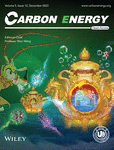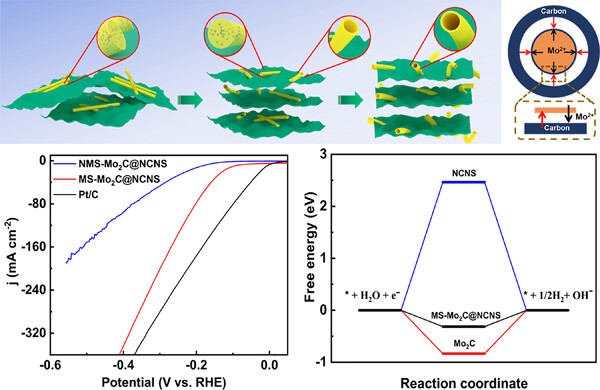Journal list menu
Export Citations
Download PDFs
COVER
Cover Image, Volume 5, Number 12, December 2023
- First Published: 30 December 2023
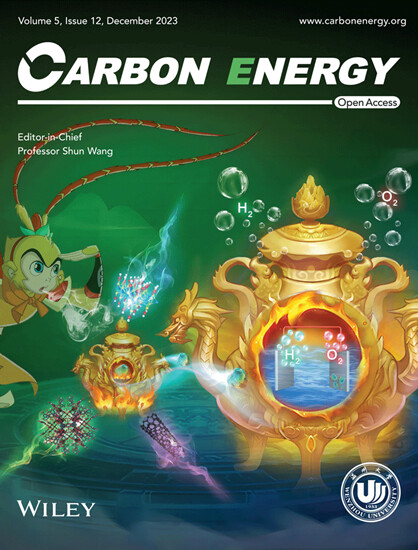
Front cover image: The traditional reliance on expensive noble metal-based electrocatalysts for water splitting reactions, such as the hydrogen evolution reaction (HER) and oxygen evolution reaction (OER), has stimulated researchers to innovate and develop novel electrocatalytic systems that are both cost-effective and efficient. In the article number cey2459, Zhou and co-workers reported a new multicomponent nanocomposite MW/HK/NiMn-S, features a unique architecture, high porosity, numerous electroactive Cu/Ni/Mn sites, fast charge transfer, excellent structural stability, and conductivity. It is significantly superior to standard noble metal-based Pt/C and IrO2 systems. The enhanced electrocatalytic performance of the nanocomposite can be attributed to the synergistic interplay among its diverse components. The distinctive characteristics exhibited by each element within this multi-component composite offer intriguing possibilities for exploration in the field of water splitting.
BACK COVER
Back Cover Image, Volume 5, Number 12, December 2023
- First Published: 30 December 2023
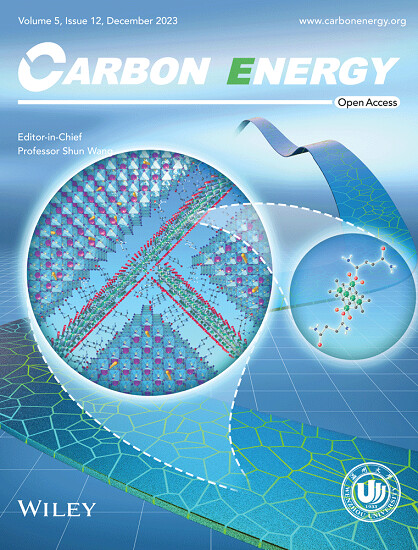
Back cover image: Mixed-halide perovskite is necessary for successful application of tandem solar cells. However, it suffers from serious phase segregation owing to the presence of residual strain, which induces structural disorders, in article number cey2.387, Duan et al. report an elastic interface to release lattice strain of mixed-halide inorganic perovskite film by using a stretchable alkenamides terminated Ti3C2Tx MXene as additive, universally healing the defective lattice and improving the efficiency and stability of wide-bandgap perovskite solar cell owing to the suppressed phase segregation.
ISSUE INFORMATION
RESEARCH ARTICLES
Compositional engineering of HKUST-1/sulfidized NiMn-LDH on functionalized MWCNTs as remarkable bifunctional electrocatalysts for water splitting
- First Published: 21 December 2023
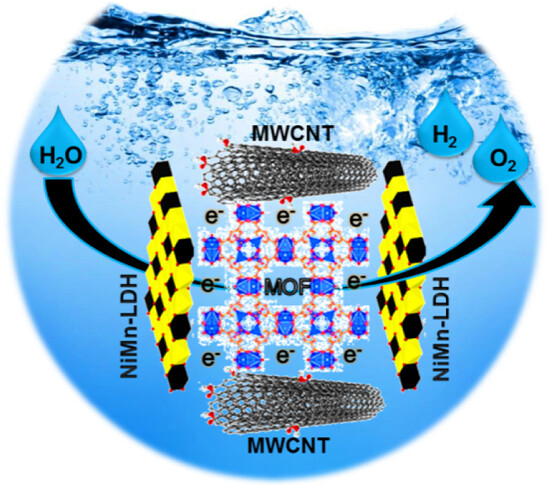
A new multiwalled carbon nanotubes/Cu-metal–organic framework/sulfidized-NiMn-layered double hydroxide (MW/HK/NiMn-S) nanocomposite was assembled, characterized, and applied as an exceptionally powerful dual-function electrocatalyst for the H2 and O2 evolution processes. The developed multi-interface engineering approach provides new perspectives for designing future dual-function electrocatalysts based on tri- or multimetallic composites with ideal conductivity, stability, and advanced water-splitting performance.
Stretchable alkenamides terminated Ti3C2Tx MXenes to release strain for lattice-stable mixed-halide perovskite solar cells with suppressed halide segregation
- First Published: 08 August 2023
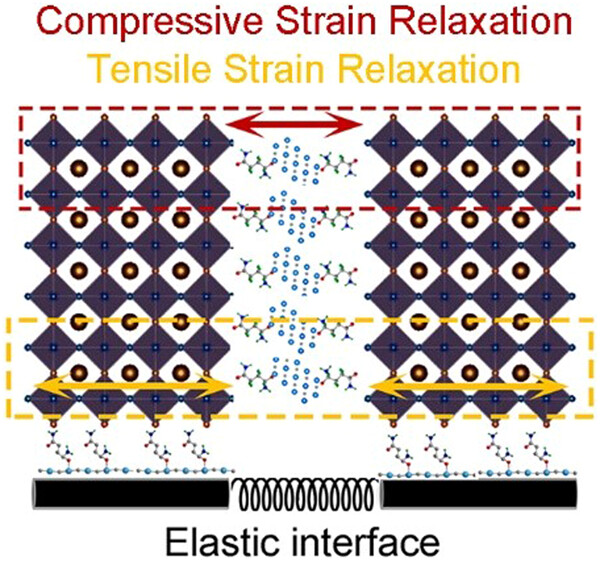
An elastic interface is fabricated to release residual lattice compressive and tensile strain of mixed-halide inorganic CsPbIB2 perovskite film by using a stretchable alkenamides terminated Ti3C2Tx MXene as an additive, universally healing the defective lattices to suppress the nonradiative recombination and improving the efficiency and stability of wide-bandgap perovskite solar cells.
REVIEW
Overview of emerging catalytic materials for electrochemical green ammonia synthesis and process
- First Published: 10 May 2023
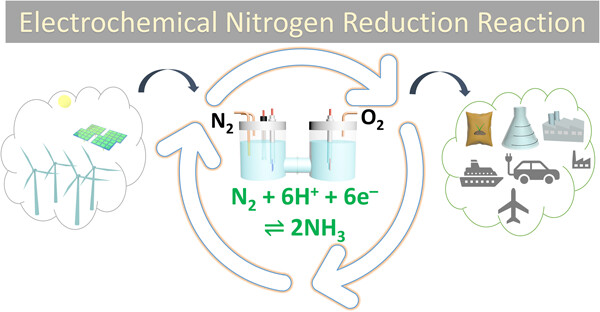
This review aims to give insightful direction and a fresh motivation toward the electrochemical synthesis of ammonia via nitrogen reduction reaction (ENRR). We proposed emerging electrocatalysts toward ENRR such as single-atom catalysts, MXenes, and metal–organic frameworks for the synthesis of green ammonia.
RESEARCH ARTICLES
Thermally insulating and fire-retardant bio-mimic structural composites with a negative Poisson's ratio for battery protection
- First Published: 27 March 2023
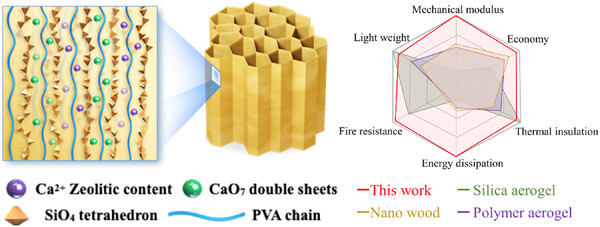
Inspired by wood, we have developed an effective approach to engineer a hierarchical nanocomposite via self-assembly of calcium silicate hydrate and polyvinyl alcohol polymer chains. The versatile protective material demonstrates an unprecedented combination of light weight (0.018 g cm−3), high stiffness (204 MPa), negative Poisson's ratio (−0.15), remarkable energy dissipation (6.67 × 105 J m−3), superior thermal insulation (0.0204 W m−1 K−1), and excellent fire retardancy (UL94-V0).
Pressureless all-solid-state Na/S batteries with self-supporting Na5YSi4O12 scaffolds
- First Published: 04 April 2023

The porous/dense/porous trilayered Na5YSi4O12 is used in an all-solid-state sodium/sulfur battery as a scaffold for the electrode active materials. The dense middle layer separates both electrodes and prevents sulfur shuttling and sodium dendrite growth. The porous layers on both sides accommodate the active materials and mitigate volume changes, thus increasing the contact area and distributing the local current.
Binary molten salt in situ synthesis of sandwich-structure hybrids of hollow β-Mo2C nanotubes and N-doped carbon nanosheets for hydrogen evolution reaction
- First Published: 27 March 2023
Manipulating Zn2+ solvation environment in poly(propylene glycol)-based aqueous Li+/Zn2+ electrolytes for high-voltage hybrid ion batteries
- First Published: 27 March 2023
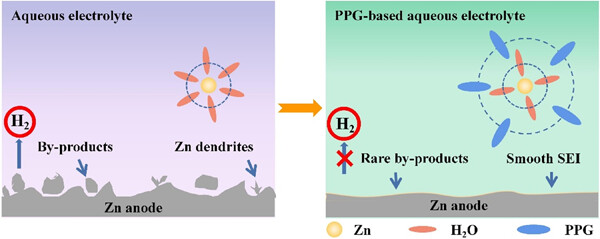
A poly(propylene glycol) (PPG)-based aqueous electrolyte is designed for Li+/Zn2+ hybrid ion batteries. PPG in the electrolyte can not only enhance the hydrogen bonding in water but also tailor the solvation sheath of Zn2+ to weaken Zn−H2O interactions; the decomposition of TFSI− contributes a ZnF2-enriched solid electrolyte interface at Zn anode to further prevent water decomposition and restrain Zn dendrites.
Micro/nano-wrinkled elastomeric electrodes enabling high energy storage performance and various form factors
- First Published: 14 March 2023
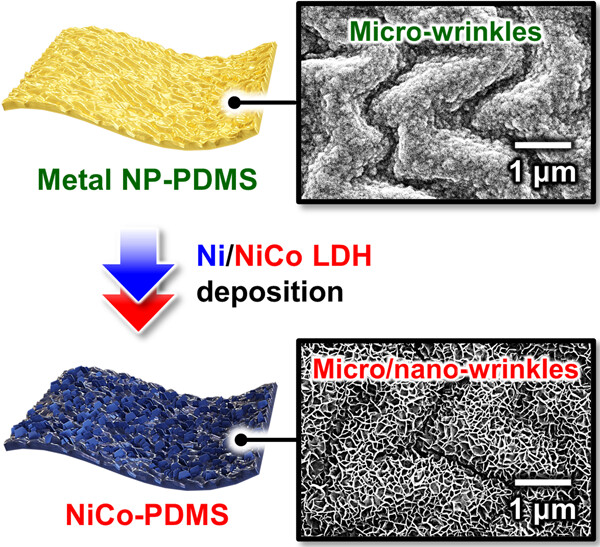
We introduce hierarchically micro/nano-wrinkled elastomeric energy storage electrodes with various form factors using metal nanoparticle assembly-assisted electrodeposition of Ni and NiCo layered double hydroxides. Based on this unique approach, the hierarchically structured elastomeric electrodes with favorable interfacial interactions between electrode components show a large active surface area, good mechanical properties, and unprecedentedly high energy storage performance.
REVIEW
Recent advances of transition-metal metaphosphates for efficient electrocatalytic water splitting
- First Published: 25 April 2023

Transition-metal metaphosphates (TMMPs) have a three-dimensional open-framework structure and a high content of P (which exists as PO3−), and therefore have been recognized as highly efficient catalysts for oxygen evolution reaction, the bottleneck of electrochemical water splitting. Furthermore, TMMPs can also contribute to hydrogen evolution reaction in alkaline and neutral media by facilitating water dissociation, and thus, overall water splitting can be achieved using this kind of material.
RESEARCH ARTICLES
Bifunctional PdPt bimetallenes for formate oxidation-boosted water electrolysis
- First Published: 04 April 2023
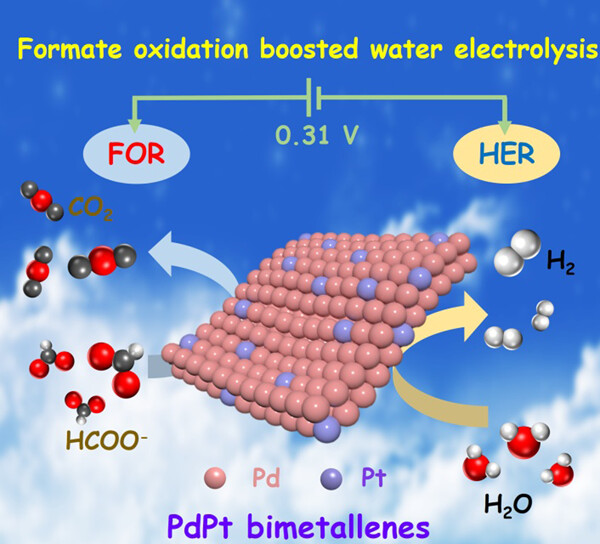
PdPt bimetallenes (PdPt BMLs) are synthesized by a galvanic replacement reaction, which leads to enhancement of intrinsic electroactivity for both the formate oxidation reaction and the hydrogen evolution reaction with respect to Pd metallence due to the synergistic effect. Also, the PdPt BMLs||PdPt BMLs formate electrolyzer requires an operational voltage of only 0.31 V for H2 production, which is 1.48 V lower than that of the traditional water electrolysis system.
Strong electronic coupling of CoNi and N-doped-carbon for efficient urea-assisted H2 production at a large current density
- First Published: 04 April 2023
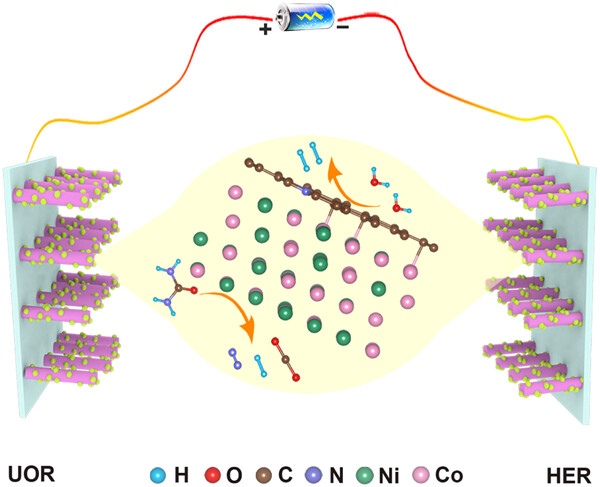
Herein, carbon encapsulated CoNi coupled with CoNiMoO for urea-assisted water electrolysis at large current density is theoretically and experimentally studied. Theoretical calculations reveal that the electronic is redistributed at the heterogeneous junction interface between CoNi and N-doped-carbon, which optimizes the adsorption/desorption energies for urea/hydrogen reaction intermediates; thus, it obtains good hydrogen evolution reaction and urea oxidation reaction activity.
Efficient solar fuel production enabled by an iodide oxidation reaction on atomic layer deposited MoS2
- First Published: 04 April 2023
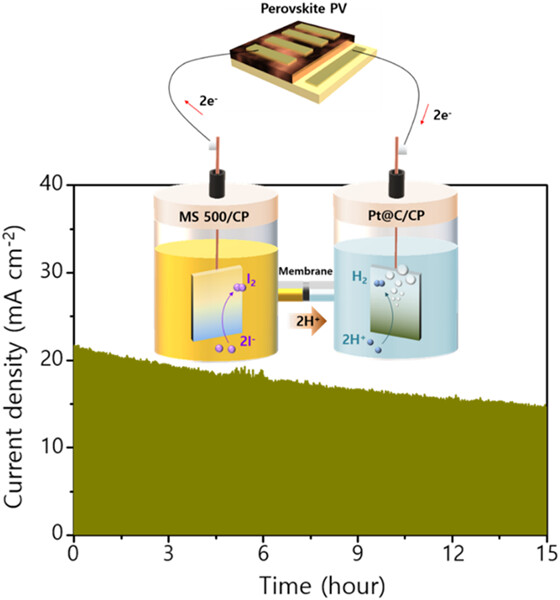
A MoS2 catalyst is uniformly deposited on carbon paper using the atomic layer deposition process. The MoS2-based heterostructure anode for iodide oxidation reaction (IOR) combined with a Pt@C cathode for hydrogen evolution reaction delivers 10 mA cm−2 at a low cell voltage of 0.66 V. By connecting this electrolyzer with a single perovskite photovoltaic cell, the resulting photovoltaic–electrochemical device coupled with IOR produces a record-high current density of 21 mA cm−2 without external bias.
Defect engineering of ternary Cu–In–Se quantum dots for boosting photoelectrochemical hydrogen generation
- First Published: 17 May 2023
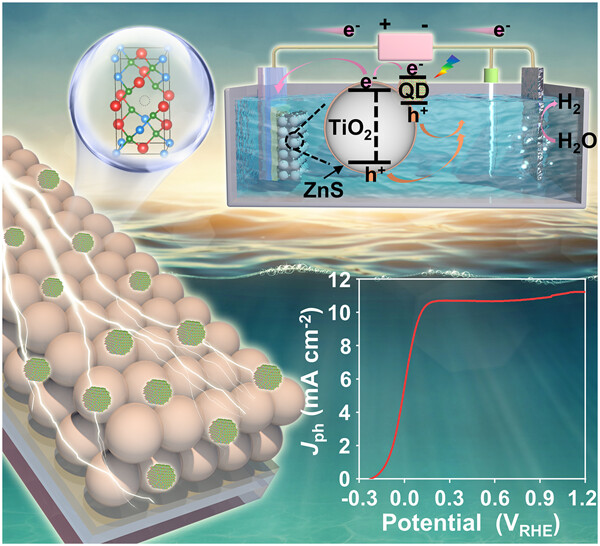
Defect engineering of ternary Cu–In–Se quantum dots is achieved by regulating Lewis acid–base reactions between metal halide–oleylamine complexes and selenium precursors. Optical and electrical properties such as carrier concentrations, mobilities, and lifetimes are tuneable by the density of Cu vacancies. Photoanodes with defect-engineered quantum dots show outstanding photoelectrochemical hydrogen generation with excellent photocurrent density (10.7 mA cm−2 at 0.6 VRHE).
Lightweight diamond/Cu interface tuning for outstanding heat conduction
- First Published: 24 March 2023
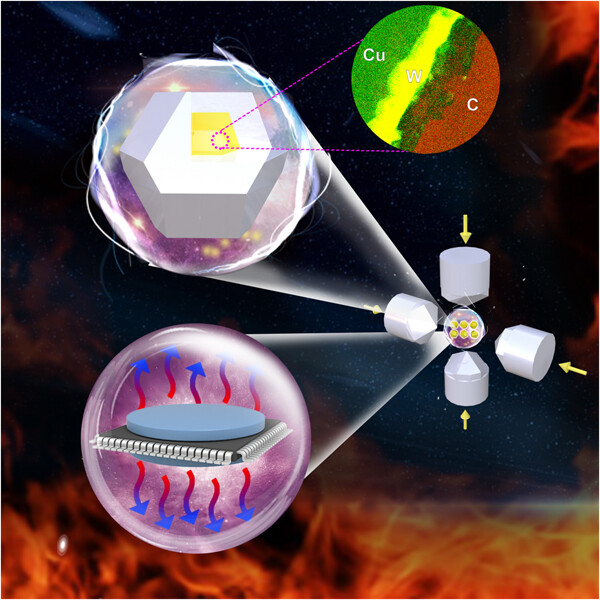
Gradient layer-coated diamond particles were prepared by combining magnetron sputtering and heat treatment. An ultra-light and high-thermal-conductivity diamond–copper composite was prepared using high-temperature and high-pressure technology. A coherent interface exists between copper and gradient layer-coated diamond, which effectively improves the electron–phonon coupling thermal transport efficiency between the interfaces.
Controllable and large-area growth of ZnO nanosheet arrays under ambient condition as superior anodes for scalable aqueous batteries
- First Published: 03 May 2023
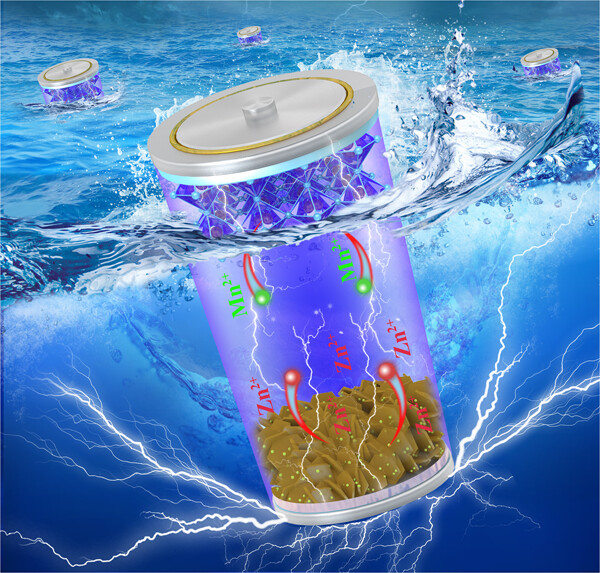
We report a controllable and large-area growth strategy based on sonochemistry for the fabrication of single-crystalline ZnO nanosheets under ambient conditions as a superb Zn anode with a very low polarization overpotential down to ~20 mV. The developed Zn@SC-ZnO//MnO2 aqueous Zn-ion batteries delivers a voltage efficiency of 88.2% under a current density of 500 mA g−1 at the stage of 50% depth of discharge.




